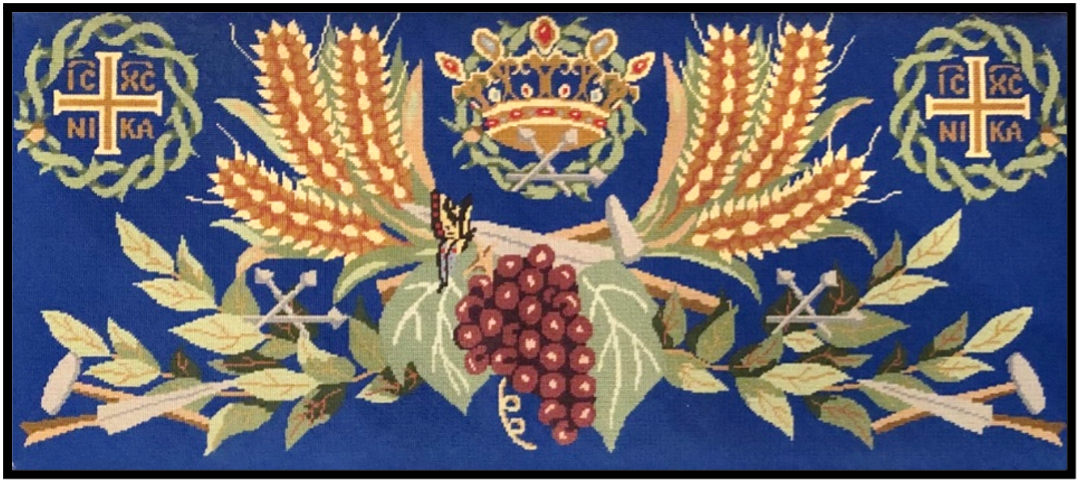As a boy raised between the rural grainland communities of Endicott and St. John, Washington, I was surrounded by first-generation immigrant elders who had been born in Eastern Europe, Scandinavia, and elsewhere. I enjoyed listening to their tales of “Old Country” life which seemed in many ways like other-worldly experience with heavy doses of folklore and traditions on the cusp of vanishing. Investigating their stories later introduced me to the remarkable work of British folklorist George Ewart Evans who ever remained hopeful about contemporary smallholder and rural community prospects. He recognized the possibilities of new cooperative relationships by which growers could pool resources to buy machinery and share storage and marketing facilities. He characterized these arrangements as “a return on a higher level to the structure of the Middle Ages.” The situation was not unprecedented in Evans’s view, as he cited the introduction of the heavy Saxon carruca plow to Britain in early medieval times and the enclosure movement as changes that necessitated innovative cooperative practices. The “break” in apprecation of the old ways of labor, thrift, and economy, Evans wrote in the 1960s, “has chiefly been in the oral tradition: a farm-worker of the old school, a horseman for instance, had latterly no apprentice to take up his lore; and the young—the true bearers of the tradition—have in this respect been receiving a speedily diminishing heritage. It is not so much that they are not interested…; they have now so few points of reference against which to measure it.”
Mutual dependance among neighbors and community members was more than virtue. It was necessity when harvest-time was essential endeavor and ritual for all able-bodied persons including field laborers, cooks, and craftsmen. The rise of mechanization that has reduced exhausting manual labor and technologies to facilitate communication and transportion will not abide nostalgic appeals to preserve the old ways. Evans characterizes such doomed efforts as “misguided romanticism” that is impossible in practical application and ignorant of the abiding dynamics of rural life through the ages. Aspects of social cohesiveness evident in harvest operations of former days have also diminished an isolated parochialism that limits wider multicultural understandings as well as individual opportunity in life. Moreover, a host of politicial and environmental conditions that threaten the wellbeing of farmers and rural communities cannot be understood apart from participation in global solutions.
Needlepoint Grain and Grapes Altar Kneeler, National Cathedral, Washington, D. C. (2019), Columbia Heritage Collection Photograph
Public awareness of land stewardship takes on special significance in a day of unprecedented industrial and technological change as world population and pressure for land use continue to grow. The number of farm residents declined during the twentieth century from 42% of the nation’s population in 1900 to just 1% in 2000. After peaking in 1935 at 6.8 million, the number of U. S. farms and ranches fell sharply until the early 1970s and today there are about two million. Moreover, just 5% of farms now produce approximately 75% of the nation’s food supply. Science writers now contribute to a new literary genre of environmental despair in the wake of global warming and food insecurity with such troubling titles as The End of Plenty, Red Sky at Morning, Perilous Bounty, and cultural critic Brian Watson’s big picture Headed into the Abyss. (The phenomenon started with publication of The End of Nature in 1989 by mild mannered Methodist Bill McKibben, who now warns in Falter [2019] of significant disruption to world crop production and decrease in grain protein levels due to climate change.) Contemporary science fiction has likewise shifted in tone from the fantasy upheaval of alien invasions or asteroid impacts to speculative dystopian thrillers.
Books like American-Canadian writer William Gibson’s The Peripheral (2014) and Agency (2020) depict a menacing state of corporate control and online existence substantially disconnected from the natural world. Instead of a single make-believe threat, Gibson’s characters face a convergence of intractable problems exacerbated by climate change, pandemics, and authoritarianism enabled by high tech mass communication. More disturbing if absurdly entertaining are novels by Joy Williams like The Quick and the Dead (2000) and Harrow (2020) in which characters vainly navigate through primal social upheaval in the aftermath of environmental spoliation. Williams’s latest title alludes to the ancient farm implement as cipher for humanity’s relationship to nature, and recalls a passage from Job (39:9-10) about the foolishness of tethering a wild ox to a harrow. This varied literature disdains the arrogance of publically invoked cultural pieties about responsible living. Such stories often invoke ancient myths bearing the common assumption that the wellbeing of humanity is inextricably linked to respect for the natural world’s titanic potential.
Societal expectations for tomorrow are strikingly varied. As a boy I experienced our family’s 1962 cross-state trip from the Palouse Hills to Seattle’s optimistically titled “Century 21” World’s Fair. Visitors were dazzled by exhibits on space travel and consumer abundance. A half-century later Milan, Italy, hosted the 2015 “Feeding the World” Fair with themes related to the problems of food security, sufficiency, and safety. A UN-sponsored session discussed the disturbing flatline of world grain yields since 2000, and how one billion developing world inhabitants were at risk of chronic malnourishment after decades of decline. Medieval era population peaked at approximately 300 million inhabitants but rose to a billion by about 1800, doubled to two billion in 1927, and reached three billion in 1960. Demographers at Milan predicted this exponential growth rate would result in ten billion by 2050 and bring attendant challenges for food resources, species diversity, and stewardship of soil.












